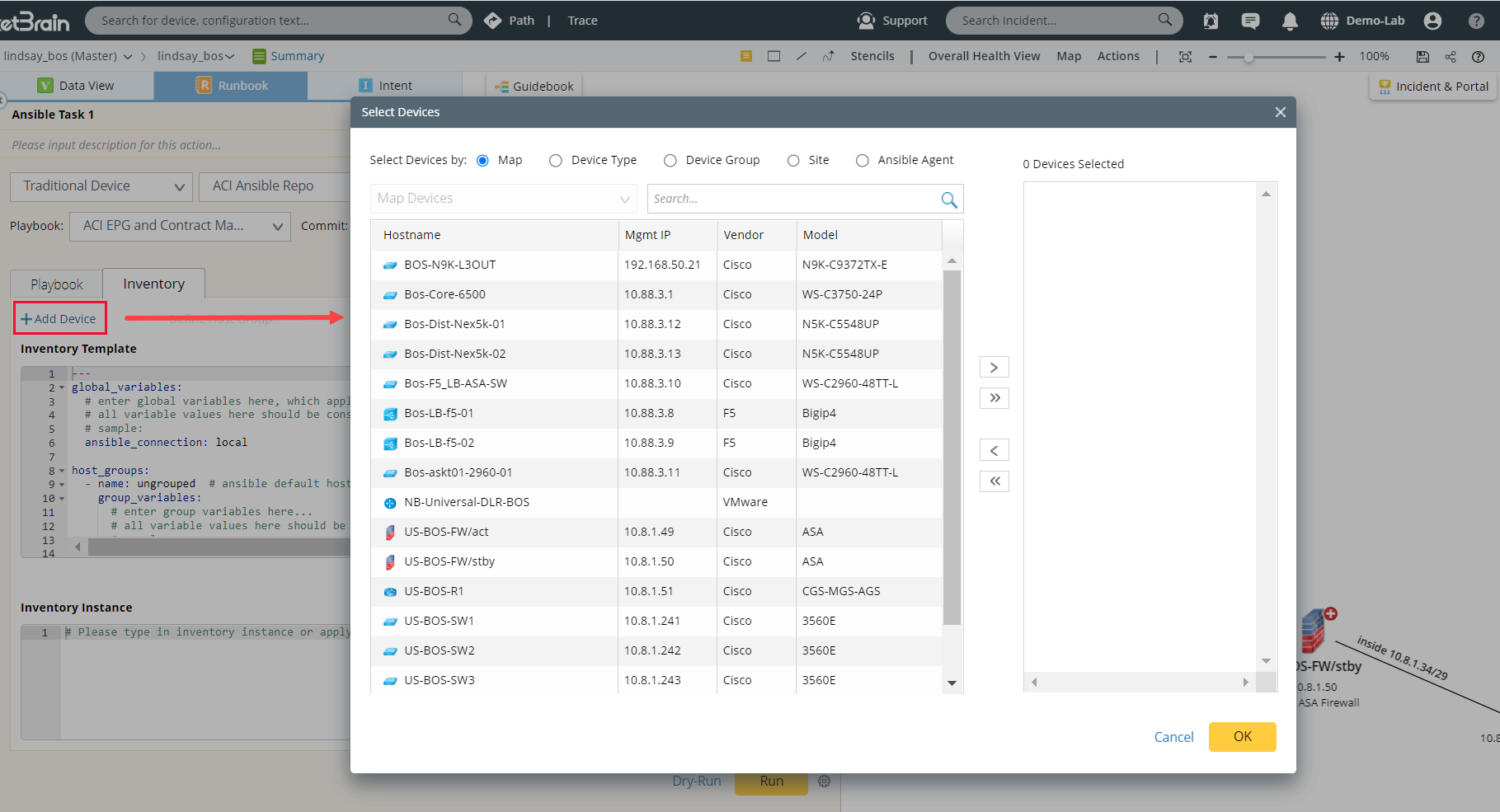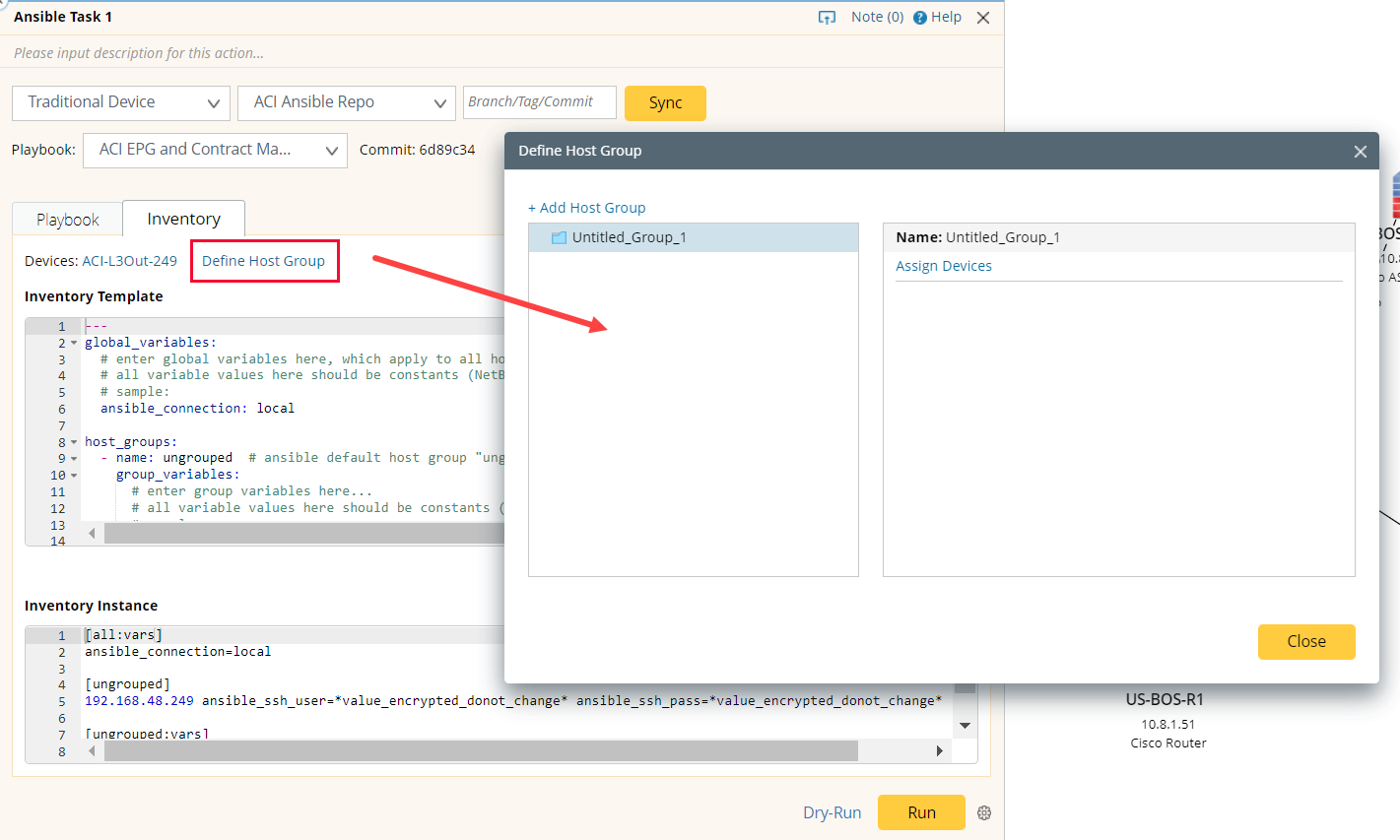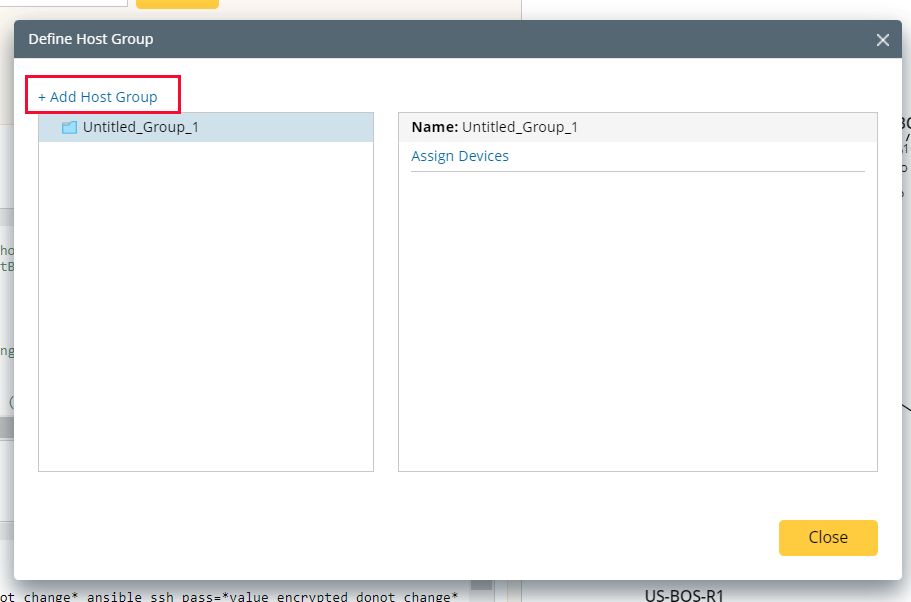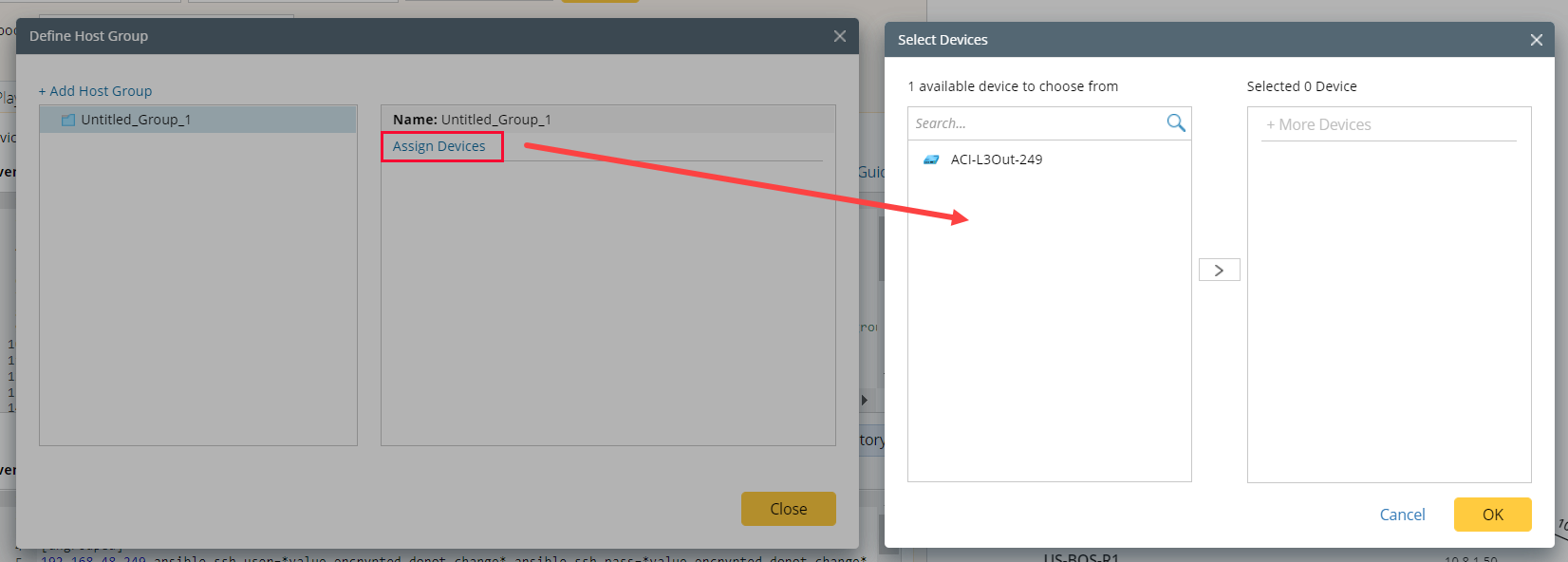2023-Nov-03-R11.1a
Defining Inventory
Complete the following steps to define an inventory under the Inventory tab.
1. Add devices to the inventory.
Click + Add Device to customize the target devices. Click OK to add more devices.


|
Note: The traditional devices should meet the following restrictions to avoid any warning or error: |
- All traditional devices must be configured with SSH access in Shared or Private Device Setting, which depends on the CLI settings of your domain. To config this setting, please go to Domain Management -> Advanced Settings -> Select Access Credential for Telnet/SSH CLI and Change Management.
- All traditional devices that can only be accessed via jumpbox are not supported.
- All traditional devices must be associated with a single Ansible Agent, which can be verified by viewing the devices’ Shared Device Setting and checking the devices’ front server. And then, you can go to Ansible Agent Manager to check if the front server is associated with a single Ansible Agent.
2. Define a host group.
We support 2 types of Host groups: Traditional Host Group and SDN
- Define a Traditional Host Group
- Click Define Host Group to assign different devices to specified host groups.
- Click + Add Host Group to create a host group with a group name.
- Cannot contain special characters such as = : ! @ # $ % ^ & *
- Must be unique.
- Maximum length is 32 characters.
- Click Assigned Devices to assign devices to the created host group. Click OK.
- Click OK.
-
Define an SDN Host Group
You cannot define the host group via UI when SDN Device is selected. SDN host groups can only be defined in the Inventory Template. See SDN Host Group for more details.


|
Tip: The Define Host Group hyperlink will become available when one or more target devices are available.
|


|
Note: Host Group name must obey the following rules:
|

|
Tip: The More Devices hyperlink is currently inactive in this step. |


|
Tip: See Legacy Host Group for more details. |